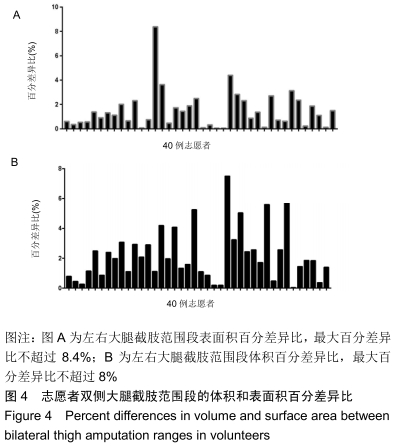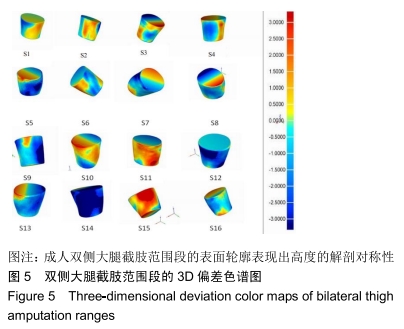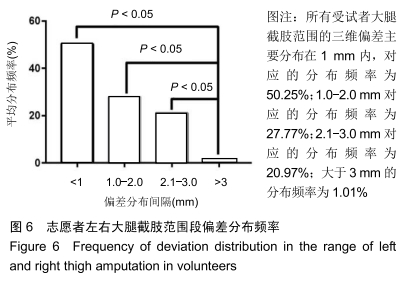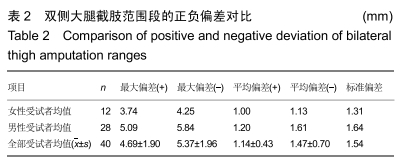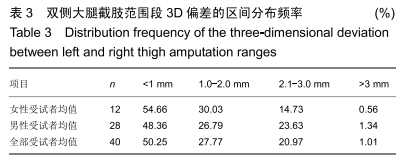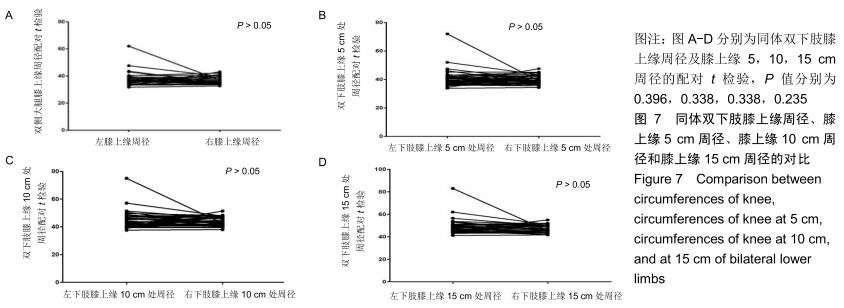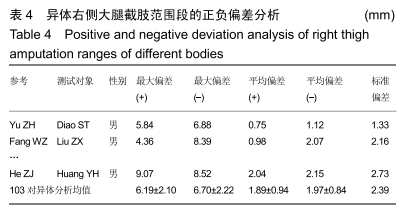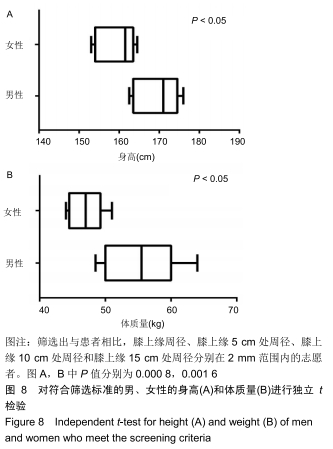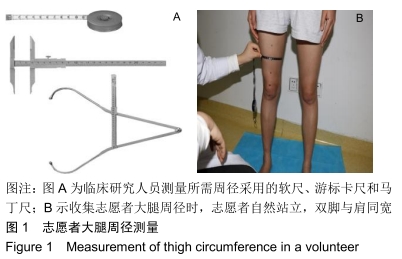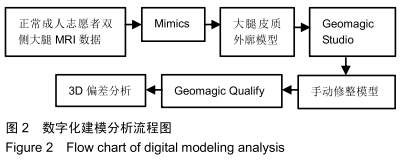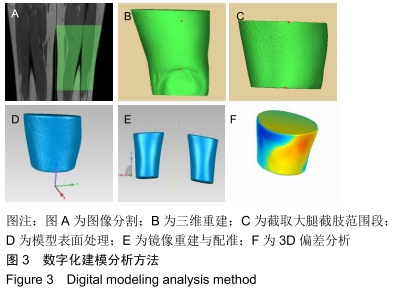中国组织工程研究 ›› 2020, Vol. 24 ›› Issue (15): 2297-2302.doi: 10.3969/j.issn.2095-4344.2579
• 人工假体 artificial prosthesis • 下一篇
建立下肢形态学数据库为匹配术后即装假肢提供参考
伍笑棋,李 顶,黄学成,黄文华
- 南方医科大学人体解剖教研室,广东省广州市 510515
Establishing morphological database of lower limbs for providing appropriate clinical postoperative prosthesis socket
Wu Xiaoqi, Li Ding, Huang Xuecheng, Huang Wenhua
- Department of Human Anatomy, Southern Medical University, Guangzhou 510515, Guangdong Province, China
摘要:
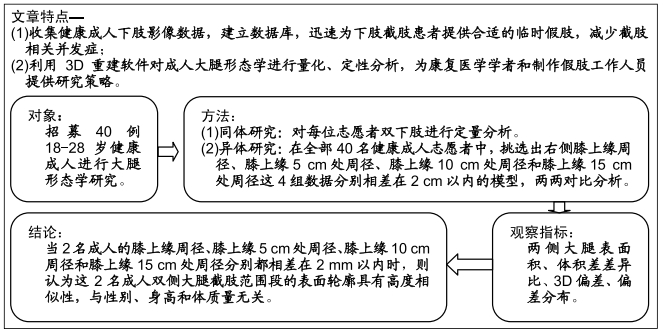
文题释义:
术后假肢:现代截肢康复的方法包括手术后安装临时假体,即在完成截肢手术后,医生为患者佩戴合适的临时假体。
大腿影像数据:研究采集的大腿数据包括膝上缘周径、膝上缘5 cm处周径、膝上缘10 cm处周径和膝上缘15 cm处周径,将大腿MRI数据导入3D重建软件,得到大腿截肢范围段表面积、体积。
大腿截肢范围段:为膝关节间隙上10-25 cm。
背景:目前假肢的制作是通过取型、修型、成型3个步骤完成的,由于修型过程是人工完成,与临床技师的经验技术密切相关,制作出来的假肢不美观,接受腔与残肢很难做到全接触。
目的:收集健康志愿者大腿MRI影像数据,评估成人大腿截肢范围段(膝关节间隙上10-25 cm)的对称性;将MRI影像数据建立成数据库,为下肢截肢患者匹配合适的术后即装假肢提供参考数据。
方法:招募40名健康志愿者,采集基本信息:年龄、身高、体质量、膝上缘周径、膝上缘5 cm处周径、膝上缘10 cm处周径和膝上缘15 cm处周径。所有志愿者对试验方案均知情同意,且得到医院伦理委员会批准。对大腿截肢范围进行三维重建,以模型的表面积、体积为参数,对每一例志愿者大腿进行解剖测量,利用三维逆向工程软件对测量结果进行3D偏差分析,完成大腿形态对称性的定量化和可视化分析。
结果与结论:①同体分析:同一个体左右大腿截肢范围段表面积之间的最大百分差异比不超过0.56%(P=0.109);左右大腿截肢范围段体积之间最大百分差异比不超过1.19%(P=0.182);三维偏差分析结果显示,最大平均负偏差为-1.47 mm,最大平均正偏差为1.14 mm。40例受试者的3D偏差分布78.02%在2 mm以内,20.97%在2.1-3.0 mm,仅1.01%大于3 mm。②异体分析:三维偏差分析结果显示,最大平均负偏差为-1.97 mm,而最大平均正偏差为1.89 mm。③提示成人双侧大腿截肢范围具有高度的解剖学对称性;当2名成人的膝上缘周径、膝上缘5 cm处周径、膝上缘10 cm周径和膝上缘15 cm处周径分别都相差在2 cm以内时,则认为这2名成人双侧大腿截肢范围段表面轮廓具有高度相似性,与性别、身高和体质量无关。
ORCID: 0000-0001-6838-3042(伍笑棋)
中国组织工程研究杂志出版内容重点:人工关节;骨植入物;脊柱;骨折;内固定;数字化骨科;组织工程
中图分类号:

